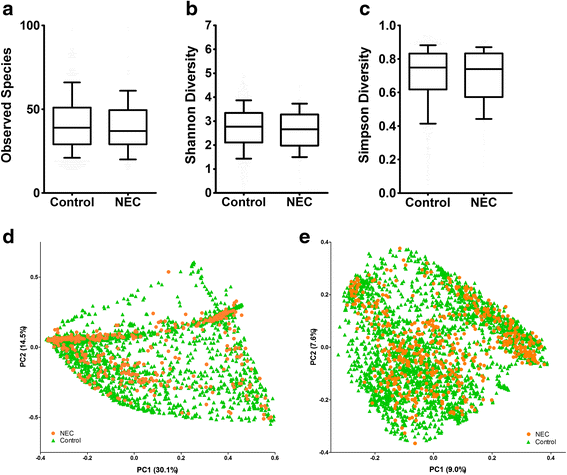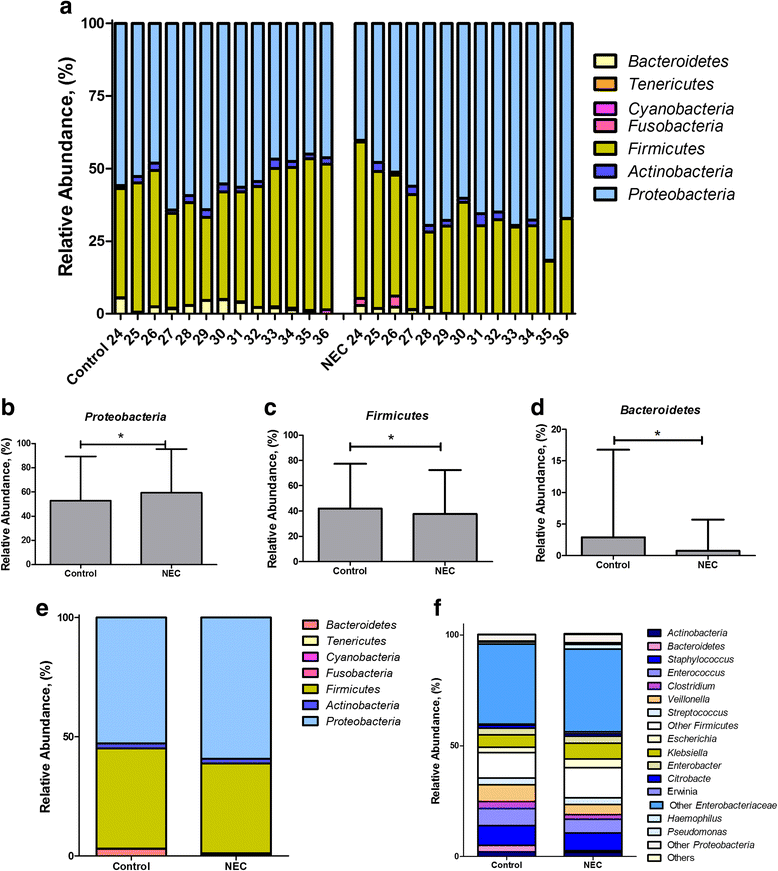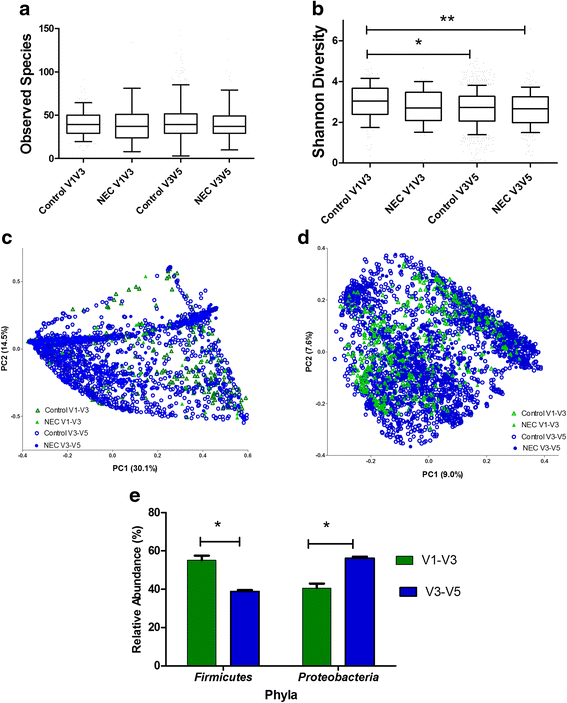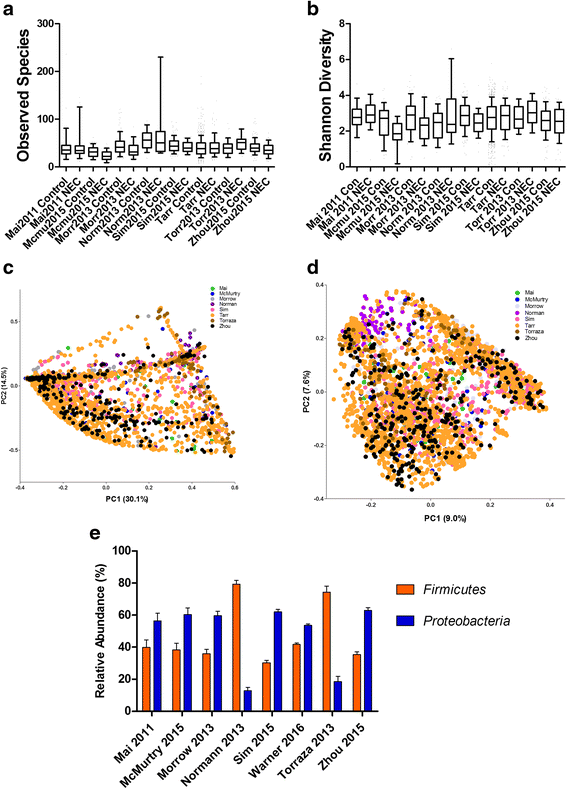Intestinal dysbiosis in preterm infants preceding necrotizing enterocolitis: a systematic review and meta-analysis
- PMID: 28274256
- PMCID: PMC5343300
- DOI: 10.1186/s40168-017-0248-8
Intestinal dysbiosis in preterm infants preceding necrotizing enterocolitis: a systematic review and meta-analysis
Abstract
Background: Necrotizing enterocolitis (NEC) is a catastrophic disease of preterm infants, and microbial dysbiosis has been implicated in its pathogenesis. Studies evaluating the microbiome in NEC and preterm infants lack power and have reported inconsistent results.
Methods and results: Our objectives were to perform a systematic review and meta-analyses of stool microbiome profiles in preterm infants to discern and describe microbial dysbiosis prior to the onset of NEC and to explore heterogeneity among studies. We searched MEDLINE, PubMed, CINAHL, and conference abstracts from the proceedings of Pediatric Academic Societies and reference lists of relevant identified articles in April 2016. Studies comparing the intestinal microbiome in preterm infants who developed NEC to those of controls, using culture-independent molecular techniques and reported α and β-diversity metrics, and microbial profiles were included. In addition, 16S ribosomal ribonucleic acid (rRNA) sequence data with clinical meta-data were requested from the authors of included studies or searched in public data repositories. We reprocessed the 16S rRNA sequence data through a uniform analysis pipeline, which were then synthesized by meta-analysis. We included 14 studies in this review, and data from eight studies were available for quantitative synthesis (106 NEC cases, 278 controls, 2944 samples). The age of NEC onset was at a mean ± SD of 30.1 ± 2.4 weeks post-conception (n = 61). Fecal microbiome from preterm infants with NEC had increased relative abundances of Proteobacteria and decreased relative abundances of Firmicutes and Bacteroidetes prior to NEC onset. Alpha- or beta-diversity indices in preterm infants with NEC were not consistently different from controls, but we found differences in taxonomic profiles related to antibiotic exposure, formula feeding, and mode of delivery. Exploring heterogeneity revealed differences in microbial profiles by study and the target region of the 16S rRNA gene (V1-V3 or V3-V5).
Conclusions: Microbial dysbiosis preceding NEC in preterm infants is characterized by increased relative abundances of Proteobacteria and decreased relative abundances of Firmicutes and Bacteroidetes. Microbiome optimization may provide a novel strategy for preventing NEC.
Keywords: 16S rRNA sequencing; Intestinal; Microbiome; NEC; Neonate; Preterm.
Figures






References
-
- Lemons JA, Bauer CR, Oh W, Korones SB, Papile LA, Stoll BJ, Verter J, Temprosa M, Wright LL, Ehrenkranz RA, et al. Very low birth weight outcomes of the National Institute of Child health and human development neonatal research network, January 1995 through December 1996. NICHD Neonatal Research Network. Pediatrics. 2001;107:E1. doi: 10.1542/peds.107.1.e1. - DOI - PubMed
Publication types
MeSH terms
Substances
Grants and funding
LinkOut - more resources
Full Text Sources
Other Literature Sources
Medical
Molecular Biology Databases
Miscellaneous

